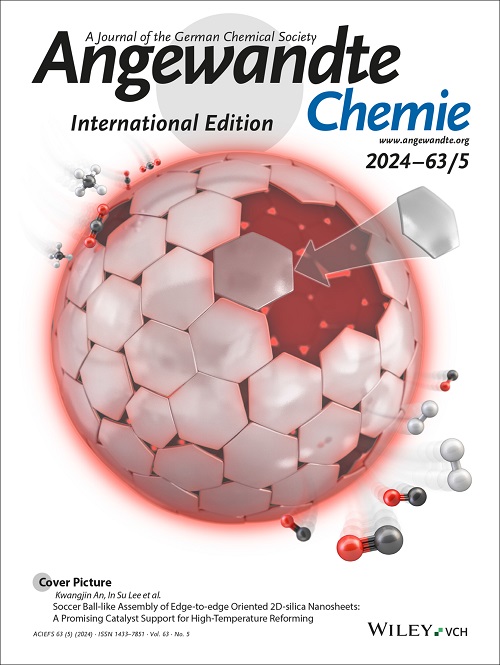IF 16.1
1区 化学
Q1 CHEMISTRY, MULTIDISCIPLINARY
引用次数: 0
摘要
在前生物条件下从二氧化碳和水非生物合成有机化合物是了解生命起源的一个基本挑战,但这一挑战尚未解决。在这里,我们模拟早期地球环境,展示了一种仅由紫外线照射水驱动的自由基介导的将二氧化碳还原为 C1-C6 碳氢化合物和含氧化合物的途径。利用电子顺磁共振(EPR)、17O/13C 同位素标记和飞秒瞬态吸收,我们发现电离水衍生自由基(H2O-+、-OH、e-aq、-H)是关键的氧化还原媒介。e-aq 作为超级还原剂(-2.9 V)将 CO2 活化为 CO2--,而 -H 则实现了连续氢化。重要的是,氧化自由基(H2O-+ 和 -OH)会将难降解的含氧酸盐(甲酸盐和草酸盐)循环回活性 CO2--,从而维持一个动态的自由基网络。这一过程通过氢原子转移、自偶联和交叉偶联等自由基组装机制产生了多种有机化合物,包括甲烷、乙烯和 C6 二甲基丁二酸酯。通过将实验验证与前生物模拟(格式介导的氧化还原调制)相结合,我们解决了原始环境中惰性 CO2/H2 激活的悖论,并确定水不仅是一种溶剂,而且是指导非生物有机合成的活性基质。本文章由计算机程序翻译,如有差异,请以英文原文为准。
Ionized Water Facilitates the Sustainable Radical‐Mediated Reduction of CO2 to Multi‐Carbon Hydrocarbons and Oxygenates
The abiotic synthesis of organic compounds from CO2 and water under prebiotic conditions is a fundamental yet unresolved challenge in understanding the origins of life. Here we demonstrate a radical‐mediated pathway for reducing CO2 to C1‒C6 hydrocarbons and oxygenates driven solely by ultraviolet irradiation of water, mimicking early Earth environments. Using electron paramagnetic resonance (EPR), 17O/13C isotope labelling, and femtosecond transient absorption, we identify ionized water‐derived radicals (H2O•+, •OH, e⁻aq, •H) as the key redox mediators. e⁻aq acts as a super‐reductant (‐2.9 V) to activate CO2 into CO2•⁻, while •H enables sequential hydrogenation. Critically, oxidative radicals (H2O•+ and •OH) recycle recalcitrant oxygenates (formate and oxalate) back into active CO2•⁻, sustaining a dynamic radical network. This process generates a diverse library of organic compounds, including methane, ethylene, and C6 dimethyl succinate, via radical assembly mechanisms spanning hydrogen‐atom transfer, self‐coupling, and cross‐coupling. By integrating experimental validation with prebiotic simulations (formate‐mediated redox modulation), we resolve the paradox of inert CO2/H2 activation in primordial environments and establish water not merely as a solvent, but as a reactive matrix directing abiotic organic synthesis.
求助全文
通过发布文献求助,成功后即可免费获取论文全文。
去求助
来源期刊
CiteScore
26.60
自引率
6.60%
发文量
3549
审稿时长
1.5 months
期刊介绍:
Angewandte Chemie, a journal of the German Chemical Society (GDCh), maintains a leading position among scholarly journals in general chemistry with an impressive Impact Factor of 16.6 (2022 Journal Citation Reports, Clarivate, 2023). Published weekly in a reader-friendly format, it features new articles almost every day. Established in 1887, Angewandte Chemie is a prominent chemistry journal, offering a dynamic blend of Review-type articles, Highlights, Communications, and Research Articles on a weekly basis, making it unique in the field.

 求助内容:
求助内容: 应助结果提醒方式:
应助结果提醒方式:


